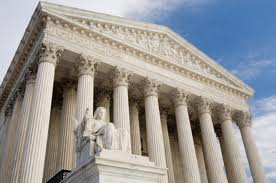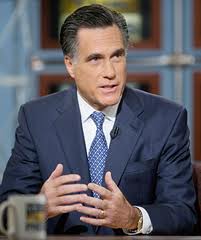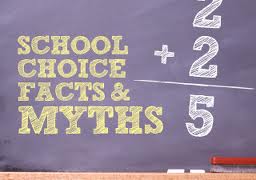Editor's note: This is the second of two posts we're running this week to commemorate the landmark U.S. Supreme Court decision in Zelman v. Simmons-Harris.
 As we commemorate the 10th anniversary of the landmark Zelman Supreme Court case, its implications are widely visible in the expansion of voucher programs, such as those in Indiana and Louisiana, as well as the growth of tax credit scholarship programs from Florida to Arizona. But the primary Zelman principle - that parents can utilize scholarship funding to enroll in any qualified school that they believe will best educate their children - is also at the heart of an important court battle in Douglas County, Colorado.
As we commemorate the 10th anniversary of the landmark Zelman Supreme Court case, its implications are widely visible in the expansion of voucher programs, such as those in Indiana and Louisiana, as well as the growth of tax credit scholarship programs from Florida to Arizona. But the primary Zelman principle - that parents can utilize scholarship funding to enroll in any qualified school that they believe will best educate their children - is also at the heart of an important court battle in Douglas County, Colorado.
Conceivably, Zelman could not only lead to the reinstatement of an innovative voucher approach that local school districts could adopt more broadly, but also provide a pillar for arguments to overturn Colorado’s discriminatory and prejudiced Blaine Amendments.
Beginning in June 2010, the Douglas County School District’s School Choice Task Force began a series of community discussions to align its programs with its overarching policy of “universal choice.” The purpose: to create “multiple pathways for educational success” and then to assist families in choosing the best educational program for their child. This led in March 2011 to the adoption of a pilot Choice Scholarship Program (CSP) whereby in the 2011-12 school year up to 500 families could receive either the lesser of a private school’s tuition or 75 percent of the per-pupil revenue the district received. This amounted to a scholarship of $4,575 for 2011-12.
Just before its implementation in fall 2011, the Denver District Court issued a permanent injunction against the program because it caused state funds to flow to religious schools, violating the Blaine Amendments in the Colorado constitution and the Public School Finance Act. The appeal to overturn this decision attracted high-powered support from the Colorado Attorney General, the Beckett Fund for Religious Liberty, the Institute for Justice on behalf of families that had received scholarships, and the school district itself. Zelman is at the heart of their legal briefs.
The Institute for Justice notes that neither the school district nor the state has any role in selecting the school in which the family enrolls, i.e., this is a private choice program that Zelman specifically endorsed as constitutional. Citing the Zelman decision, when a scholarship program “permits government aid to reach religious institutions only by way of the deliberate choices of numerous individual recipients, the circuit between government and religion is broken,” and any “incidental advancement of a religious mission…is reasonably attributable to the individual recipient, not to the government.” This principle of parental choice, which state supreme court decisions upholding voucher programs in Wisconsin and Ohio recognized even prior to Zelman, led an Indiana court this year to reject a challenge to the Indiana Choice Scholarship Program. Yet, for some reason, the Colorado trial court chose to ignore this precedent. (more…)
Editor's note: This is the first of two post we're running this week to commemorate the 10th anniversary of the monumental U.S. Supreme Court decision in Zelman v. Simmons-Harris, which upheld the constitutionality of the voucher program in Cleveland, Ohio and kicked open the doors for expanded school choice nationwide.
Zelman made clear that the federal constitution allows states to give money to parents that they can use for tuition at religious schools. So long as states don’t directly finance the school itself, no foul. Sadly, some states have constitutions with “Blaine Amendments” that do forbid helping parents this way. These are relics of bigotry; hopefully, the federal courts or sheer political shame will one day erase them.
Would a national commitment to parental choice be a good thing? Think about it. First, remember that the choice of a religious school by parents who pay is a long settled constitutional right. It is widely exercised by those who can afford it. Middle class people in fact have considerable control over where their children enroll and what they learn; they can move to a house in their favorite suburb or they can pay private school tuition.
Clearly, our society is committed to the proposition that parental choice is a social good—at least when made by those who can pay for it themselves. The real issue, then, is whether choice is a good for kid, kin, and country when exercised by families of ordinary means and by the poor.
More bluntly—do we or don’t we want inner-city citizens exercising their rights over their own children? Why have we made it so hard for them? And even where we do allow them to choose a bit (as with public charter schools), what do we, as a society, gain or lose by excluding religious private schools as one among many choices?
Long ago Plato gave arguments for having the state seize complete authority over the child at birth from all families—rich and poor. He thought he knew the one true way and simply did not trust any parent to do right. Maybe there are some platonic arguments for various goods that America achieves when it frustrates choice to the extent it does. Is it somehow productive to snatch the child the child from the authority of ordinary parents for the prime hours of the day for 13 years? What magic is worked by government monopoly over the core experience of the child outside the home?
Is it right that we assume that ordinary parents who cannot afford to pay tuition do not deserve that choice, even if they believe the choice would be best for their children? Crime is, to be sure, more common among lower income groups. But is it less common than it would be if the government were to allow choice? What is cause here and what is effect? Do kids (and all of us) really improve by having complete strangers decide what is worth learning? And do these unchosen strangers do a better job at transmitting the ideas that all of us think important? (more…)
 Next week marks the 10th anniversary of the monumental U.S. Supreme Court ruling in Zelman v. Simmons-Harris – the decision that upheld the constitutionality of the voucher program in Cleveland, Ohio and accelerated school choice nationwide by describing the conditions under which parents could use public funds to pay tuition and fees at religious schools. To honor the occasion, redefinED will bring you special posts from our partners at the American Center for School Choice.
Next week marks the 10th anniversary of the monumental U.S. Supreme Court ruling in Zelman v. Simmons-Harris – the decision that upheld the constitutionality of the voucher program in Cleveland, Ohio and accelerated school choice nationwide by describing the conditions under which parents could use public funds to pay tuition and fees at religious schools. To honor the occasion, redefinED will bring you special posts from our partners at the American Center for School Choice.
On Monday, you’ll hear from John E. Coons, a member of the ACSC board of directors and a professor of law, emeritus, at the University of California, Berkeley. “Do we or don’t we want inner-city citizens exercising their rights over their own children?” he writes. “Why have we made it so hard for them? And even where we do allow them to choose a bit (as with public charter schools), what do we, as a society, gain or lose by excluding religious private schools as one among many choices?”
On Tuesday, ACSC executive director Peter Hanley will weigh in. He takes a closer look at the ongoing court battle over vouchers in Douglas County, Colo., and writes this about some of the legal briefs filed in the case: “Drawing on the historical work of my American Center for School Choice colleagues … the briefs provide a lurid and extensive history of the anti-Catholic bigotry that led to a wave of state constitutional amendments banning funds to support “sectarian” (19th century code for “Catholic”) organizations. They make a compelling case that the trial court not only erred in finding the amendments were violated, but incorrectly ignored this shameful history that means they should be struck down.”
Enjoy.
 Mitt Romney’s white paper on education, “A Chance for Every Child,” offers laudable support for increased parental choice and for other changes, such as tenure reform, that must occur to improve education in America. Like Obama, Romney wants to leverage federal dollars to move states in the right direction on public school choice, especially the removal of charter school caps and the adoption of open enrollment policies. He also advocates for private school choice “where permitted by state law.”
Mitt Romney’s white paper on education, “A Chance for Every Child,” offers laudable support for increased parental choice and for other changes, such as tenure reform, that must occur to improve education in America. Like Obama, Romney wants to leverage federal dollars to move states in the right direction on public school choice, especially the removal of charter school caps and the adoption of open enrollment policies. He also advocates for private school choice “where permitted by state law.”
But is his plan viable? And will he lead to implement it?
Romney would remove most of No Child Left Behind’s accountability standards in favor of expanded reporting on how schools are different. He would allow states to set their own standards and tests, but print the state’s National Assessment of Educational Progress (NAEP) outcomes on school and district report cards. NAEP brings much value to the discussion of education performance in America, but none to how an individual school district or school is performing because it does not test sufficient numbers or in every school and district. Implicit in this move - away from accountability by achievement measures towards improved information about schools - is that such information is lacking today. But parents are actually quite knowledgeable about local schools’ pluses and minuses and can access sites such as www.Greatschools.org for more detailed information.
So, for this information to be vastly more empowering than it is today, Romney recognizes that school choice would have to be dramatically expanded. That’s especially true for public school choice where, frankly, most of the schools will be for the foreseeable future.
The Romney plan seeks to expand choice primarily in two ways. First, he would convert Title 1 and federal special education (IDEA) funds that go to schools serving economically disadvantaged students. They would become vouchers that the eligible Title 1 and special ed students could take to any other school, including a private school, or even to a tutoring provider or digital school. Second, he would require states, as a condition for receiving these funds, to adopt open enrollment policies and eliminate caps on charter and digital schools.
The Title 1 and IDEA proposal is worthy of consideration. (more…)
 The assertion that school choice somehow exacerbates segregation and separatism in American society surprises me every time it pops up. The ideal of traditional public education, a “common school” available equally at no cost to all citizens to impart a high level of academics as well as a core set of American values, has always been a myth. Yet it has amazing staying power despite the facts.
The assertion that school choice somehow exacerbates segregation and separatism in American society surprises me every time it pops up. The ideal of traditional public education, a “common school” available equally at no cost to all citizens to impart a high level of academics as well as a core set of American values, has always been a myth. Yet it has amazing staying power despite the facts.
Put aside a hundred years of state-sanctioned racism that outlawed education for slaves, and then engendered “separate, but equal” schools for another 90 years until the 1954 Supreme Court decision banned the practice. Let’s look at how this “common school” system serves Americans now.
The statistics on K-12 education in the Department of Education’s "The Condition of Education, 2011" report are informative. Nationally, 31 percent of African-American students are in schools that have 75 percent or more African-American students. The figure is nearly 33 percent for Hispanic students. Nationally, 62 percent of whites attend a school with a population over 75 percent white, while those schools serve around 7 percent of the African-American and Hispanic populations.
When city demographics are analyzed, the segregation of traditional public schools dramatically jumps. Forty-two percent of African-Americans and 39 percent of Hispanics are in schools with 75 percent or more of those same students. Not surprisingly, school enrollment and especially urban school enrollment reflects how a public education monopoly assigns students to schools - by zip codes.
Another way to look at how this “common school” system is serving us is the distribution of the free and reduced lunch (FRL) population, which the Department of Education identifies as a proxy for low-income students. High-poverty elementary schools, those with 75 percent or more of an FRL population, enroll 45 percent of Hispanic students and 44 percent of African-American students. For whites, the enrollment is 6 percent in high-poverty schools. Nationally, urban areas account for 29 percent of our student population, yet 58 percent of all students in high-poverty schools live in our cities.
Combine this data with dropout statistics in the 40-60 percent range for inner-city minority populations, and abysmal academic outcomes for so many of the remaining students, and you have the “common school” myth stripped bare. (more…)
Peter Beinart, a professor at the City University of New York and a former editor of The New Republic, has a provocative opinion piece in today’s Wall Street Journal arguing that non-Orthodox Jews should reverse their opposition to private school vouchers in order to make Jewish education better and more affordable. Beinart writes that the U.S. “has one of the weakest Jewish school systems in the world. Less than 20% of American Jewish children attend full-time Jewish schools. That's half the rate in France, one-third the rate in Canada and Australia, and one-fourth the rate in Mexico.”
Beinart worries that allowing Jewish students to use public funds to pay for religious schooling might be challenged constitutionally, but I don't think that's an issue.
In its 2002 Zelman v. Simmons-Harris decision, the U.S. Supreme Court ruled parents may use public funds to pay tuition and fees at faith-based schools provided the money goes first to the parents and their choice is “genuine and independent.” That is, parents can’t be directly and indirectly coerced into attending a religious school. (more…)